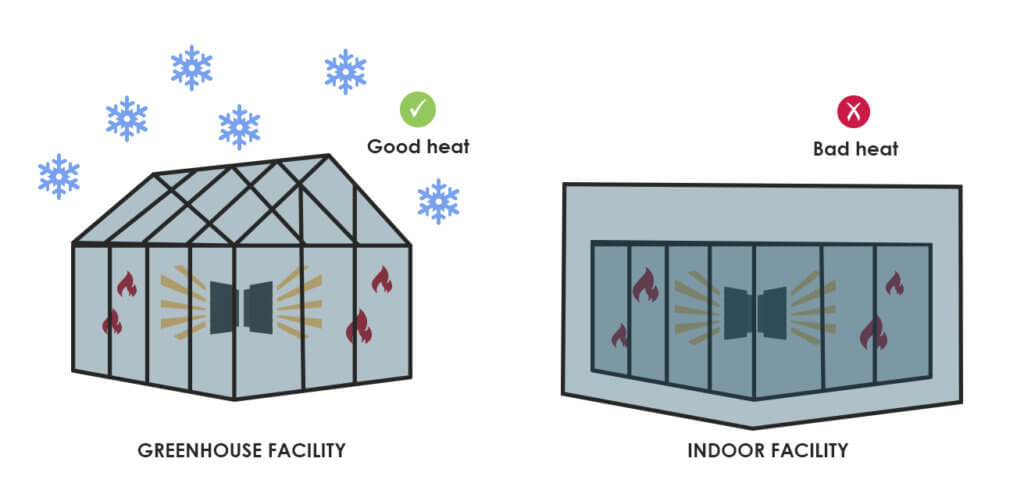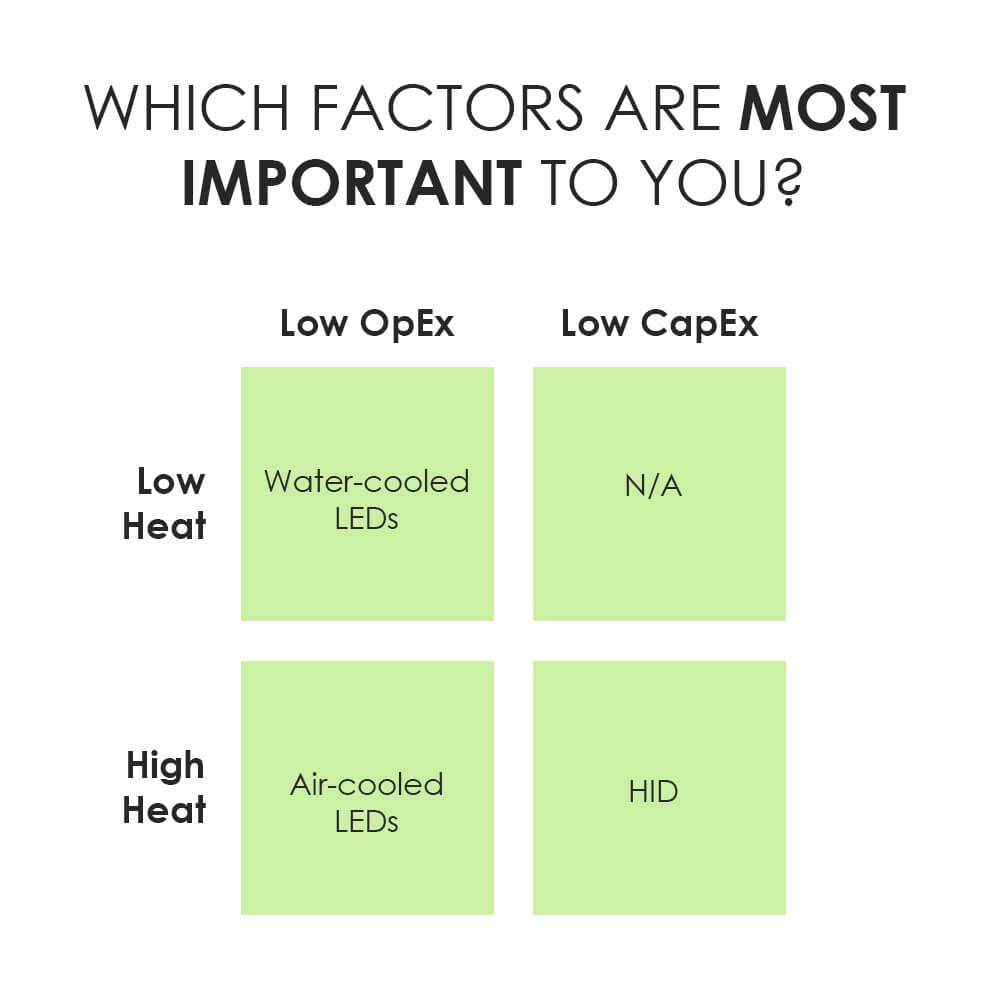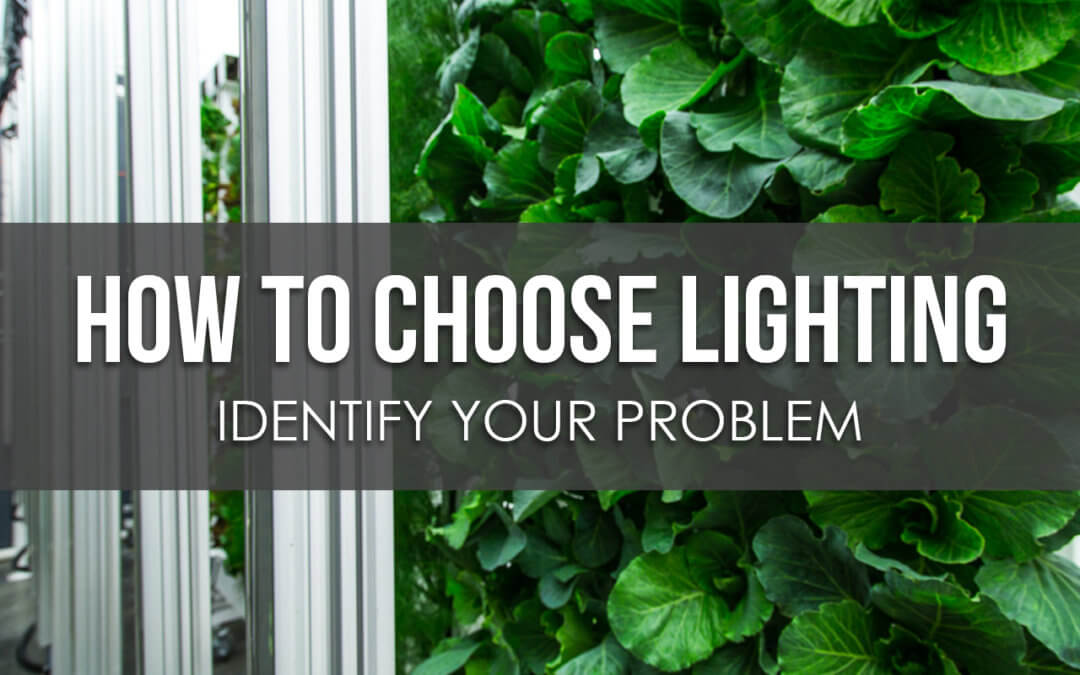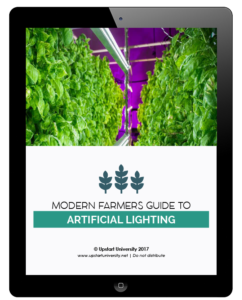With grow lights, there is no “one size fits all” solution. Before you choose lighting, make sure that you think through your situation very carefully, understanding the problem you’re trying to solve.
Start off by looking carefully at your problems.
Your problems aren’t necessarily obvious. You might think, “my problem is I need to light my crop.” A lot of growers miss the fact that providing light isn’t the only way that lighting interacts with their farm. Lighting often has to solve problems like:
- I have too much heat
- I have a tight budget
- I have too little heat
- I have a bigger budget next year than this year
- I have a low capital expense budget
Of these, the most common problem is going to be heat.
Lights produce a lot of heat, regardless of which kind you’re using. That represents a lot of wasted electricity. If you’re doing supplemental lighting in a greenhouse, you can use that waste heat to heat your greenhouse. But if you’re indoors, that heat could accumulate and you’ll spend money removing it.

Think about this factor holistically in your farm.
 For example:
For example:
“I have some friends who are growing in a greenhouse on a limited budget. They’d like to grow using LEDs, but their budget won’t allow it. They’re in an environment that gets cold in the winter, so I encouraged them to use HID (HPS specifically).
“Their electricity costs will be higher, but it’s a one-year thing. There is a community of growers in their area that they can sell the lights to, and replace with LED down the road when they have the budget. This is good for them. They’re thinking long term, short term, and all said and done will have no sunken costs.”
CapEx vs OpEx in lighting tech
Capital expenses (CapEx) are the one-time initial costs such as purchasing equipment, down payments, permit fees, etc.
Operating expenses (OpEx) are recurring costs or payment plans such as utilities, labor, and replacement costs.
People usually try to optimize for one or the other type of cost. There is almost always an inverse relationship; growers optimize for one and pay higher for the other.
Optimizing for OpEx:
If you optimize for operating expense, you’re going to spend more on the front end. You’ll choose something like LEDs. LEDs will use half the electricity but will cost more up front. Over a couple years, you’ll save money on operating expenses. This is an example of optimizing for OpEx.
Optimizing for CapEx:
If you’re optimizing for CapEx, you’re probably operating on a low initial budget, but in need of lights. In this case, a lighting type like a metal halide light can be a better option. They’re readily available, they can be bought inexpensively, and they work well. The thing to remember is that you’ll be generating a lot of heat. In the long run, you need to understand the cost of mitigating that heat. It could be a problem.
Types of lighting
When you first start navigating the lighting industry to make a choice, you’ll have a ton of options. You’re really dealing with a few main categories; HID and LED (bars vs fixtures and water-cooled vs air-cooled) are the two biggest kinds of grow lights.
In HID, the main types are high-pressure sodium and metal halide.
In LED, you have two differentiators: shape and cooling. The two main shapes are bars and fixtures (box lights) and the two main types of cooling are water-cooling and air-cooling.

No matter what, the type of fixture that you use should be solving a specific problem for you.
Once you have a general idea of what direction you need to go, it’s time to start thinking about lighting metrics.
The 411 on lighting metrics
Ultimately, metrics for evaluating light can be pretty subjective. You can run through a lot of stats, but at the end of the day the core factors are:
- Cost per watt
- Amount of heat generated per watt of input (efficiency)
- Fixture vs bar
- Orientation and setup
These help you make an objective decision about the quality of a lighting type before you get into things like the warranty.
Stay tuned for more articles and videos that dig into these metrics!
Psst… Have questions you’d like answered? Leave a comment!
Want to understand lighting even more?
Check out The Modern Farmer’s Guide to Indoor Lighting.
- Types of indoor lighting
- Measurements of light intensity and how to use them
- How light-emitting diodes (LEDs) work
- Considerations of LED form factors such as box, panel, and bar lights
- Information from farmers, for farmers.




What does “401” mean?
It’s really a cool and useful piece of information. I’m satisfied that you just shared this helpful info with us.
Please keep us informed like this. Thanks for sharing.
Great post! We are linking to this particularly great article on our website.
Keep up the good writing.
I’d like to find out more? I’d want to find out some additional information.
Check out this guide on artificial lighting for more info: https://info.brightagrotech.com/the-modern-farmers-guide-to-artificial-lighting